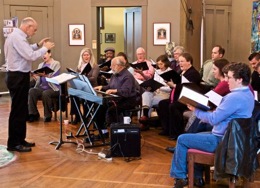Debussy by Chance
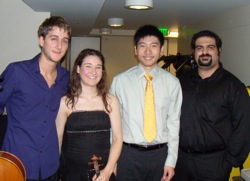
After a "Wozzeck event" at the S.F. Conservatory Thursday night [see next item], I turned one way instead of another when leaving, and wound up bumping into a notice about a student concert.
With the Debussy String Quartet in G Minor, Op. 10, this was not a chance encounter to ignore. It also turned out to be the year's last student concert, and a fabulous performance, especially by the first violinist, Emily Nenniger.
Her solos and duets with violinist James Jin had a warm, haunting quality; violist Omid Assadi and cellist Sebastian Plano contributed well.
The sound was authentic Debussy, meandering here, lyrically singing there, with precise pizzicatos, and faultless legato passages — but beyond all that, the young musicians gave the work unusual energy and forward movement, slowing down only for the gorgeously melodious "Andantino doucement expressif," and finishing with a self-assured, energetic final movement.
It is said the quartet was influenced by César Franck, Borodin, and Javanese gamelan; I hear the first clearly, the second a bit, and the third not at all. The work has been described as "diabolically, fiendishly difficult, presenting unprecedented challenges for the ensemble," but the students made the performance look and sound effortless.
It was a grand event to catch by chance.
Wozzeck by Design
There were superlatives galore at the Ensemble Parallèle's sneak preview Thursday of its upcoming production of Berg's Wozzeck:
- Nicole Paiement, the Ensemble's music director, is clearly the work's greatest, most passionate proponent
- Bojan Kneževic, in the title role, has a magic combination of voice and presence to convey fully this most tragic of operatic characters
- Keisuke Nakagoshi was amazing in providing a one-piano version of the two-piano reduction of the complex orchestral score
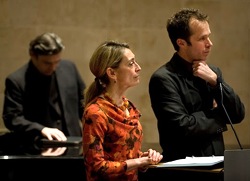
Filled to the brim, the Conservatory's 140-seat Recital Hall was a too-small venue for this exciting — and free — event. Realizing in advance that she cannot come close to fulfilling her "tell-all" ambitions, Paiement prefaced the presentation:
It is not easy to speak briefly of Wozzeck — a unique and searing musical drama that reveals the dark dilemmas that haunt modern life. Its grandeur surpasses the many books and essays that have been written on the subject."Mission accomplished," this time was for real. Paiement analyzed, dissected, preached, sold, enthused, sliced, and diced — giving one of the most convincing arguments in my memory to bring audiences to an atonal work. In just one hour, she traced the history of the piece (from the real story in 1821 of a murderous soldier — executed in 1824 — to Georg Büchner's 1914 unfinished play, to Berg's 1925 opera, composed between 1914 and 1922), explained its place in 20th-century music, diagrammed the five parts constituting each of the three acts, presented recorded and live excerpts.So, my goal this evening is to share with you some of the elements that give the work such a dramatic impact. Through some live musical examples and samples of our expressionistic video, I hope to shed some light on this immortal drama, and entice you to join us for the performances in January.
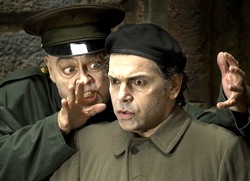
The way Paiement illuminated the work — in a musical/historical/artistic context — was reminiscent of the late Michael Steinberg's program notes. From the role of Expressionism in music, to the evil Doctor's all-bean diet for Wozzeck, to the identification of Baroque and other classical elements in the atonal music, to the clear exposition of Berg's leitmotifs, to a detailed explanation of the new orchestration she uses at these performances, Paiement both dazzled and communicated effectively.
Besides the overarching exposition, there were fascinating details, none more interesting than about the direction of notes during Wozzeck's drowning: what may be expected is that the notes are descending as he is sinking. In fact, Paiement showed, the notes are ascending because to Wozzeck, the water is rising.
Also: Margret is singing tonally by herself, but heard atonally in Wozzeck's disintegrating mind; the use of col legno (striking the string with the side of the bow); the depiction of blood on Wozzeck's knife — after a single blow in the music, but a veritable bloodbath for Wozzeck; the orchestral epilogue pleading for humanity in the midst of all the bleakness, and many, many more details and observations.
Come the Jan. 30-31 performances, it would serve the audience — and Berg — well if Paiement gave a similar lecture before the events. And, perhaps, after.
The impressive cast includes John Duykers (Captain), Patricia Green (Marie), Phillip Skinner (Doctor), and AJ Glueckert (Drum Major).
Federal Investment in the Arts
Long-neglected stepchildren, the arts are beginning to get some serious federal support, says an Associated Press story:
In his first year, President Barack Obama has marshaled the largest infusion of cultural funding in decades — despite a few stumbles.Though still far less than arts advocates contend is needed, they have high hopes this president could transform cultural policy, funding and arts education for years to come.
Across Washington, cultural leaders have taken note of Obama's approach. They're impressed with the variety of musical performances and workshops held at the White House this year, covering classical, jazz, Latin, and country tunes.
There's also the $100 million in new funding for the arts, including a one-time $50 million infusion from the economic stimulus package to preserve arts jobs. There were sizable increases as well in the annual appropriations for the arts and humanities endowments. Both agencies will receive $167.5 million in 2010, their largest allocations in 16 years.
"It's still a relatively small amount of money — a $12.5 million increase [for 2010] spread over 100,000 arts organizations," said Michael Kaiser, president of the John F. Kennedy Center for the Performing Arts. "But symbolically, it was very important because so many state and local arts agencies are being cut by their state and local governments, so to have the federal government ... actually put more into arts, I think was very important."
Holiday Music Preferences
After Round 1 and Round 2 of our highly eclectic survey of favorite holiday music selections, here's the third and final installment ... until next year.
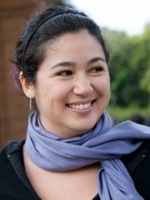
Valerie Moy, International Orange Chorale, S.F. Girls Chorus Alum
My favorite Christmas pieces are the treble chorus arrangements of more obscure carols, like Gabriel's Message and Once in Royal David's City. They bring out the holiday spirit without being overplayed, and I relish any chance I get to sing the lowest harmonies.Ann Rosenfeld, tea provider for San Francisco Opera
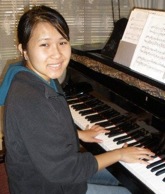 My holiday season favorite is L'enfance du Christ by Hector Berlioz. It is hauntingly beautiful, and the several recordings I have of this are all rewarding. Full of choral goodness and orchestral magnificence. One of my dreams is to attend a live performance. I am glad to be in the Bay Area with its overflowing choral and orchestral and operatic richness.
My holiday season favorite is L'enfance du Christ by Hector Berlioz. It is hauntingly beautiful, and the several recordings I have of this are all rewarding. Full of choral goodness and orchestral magnificence. One of my dreams is to attend a live performance. I am glad to be in the Bay Area with its overflowing choral and orchestral and operatic richness. Melanie Chan, UC Berkeley student
I once heard the Poznan Nightingales Boys Choir's rendition of the Hallelujah Chorus from Handel's Messiah, and it was only then that I became so enamored by this powerfully uplifting melody. Its beauty and triumph truly captures the very essence and heart of Christmas.Theresa Gabel, Director of Operations, Berkeley Symphony
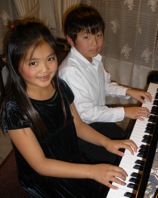 My favorite Christmas song of all is "Gesu Bambino." I grew up in a musical family and my father sang it to us on Christmas Eve for as far back as I can remember, accompanied by my mother at the piano. I have always loved the counterpoint chorus adapted from Adeste Fidelis, and sang along with that very familiar part from an early age. My father is no longer of this earth, but hearing Gesu Bambino brings him right back.
My favorite Christmas song of all is "Gesu Bambino." I grew up in a musical family and my father sang it to us on Christmas Eve for as far back as I can remember, accompanied by my mother at the piano. I have always loved the counterpoint chorus adapted from Adeste Fidelis, and sang along with that very familiar part from an early age. My father is no longer of this earth, but hearing Gesu Bambino brings him right back. Casey and Aaron Wakashige, piano students
After we heard it performed by the Jackson Five, we played Up on the House Top together at a recital, and it was a great success, so it's now our favorite. [The composer is Benjamin R. Hanby, who wrote this children's favorite in the mid-1800s.]Jeff Badger, Executive Director, S.F. Renaissance Voices
When the music starts swelling in the Nutcracker as the Christmas tree starts to grow and grow until it's gigantic. It still "gets me" ... and to this day I have no idea why I get all choked up and why it has that effect on me. I suspect it's because like a piece by Shakespeare or Mozart, no matter how it is done it's always magical.Remedios Labrador, nurse practitioner
Silent Night still brings solemn, warm feelings, and it tells the story why we celebrate the season.Rick Kaname Shinozaki, violinist, Del Sol String Quartet and Symphony Silicon Valley
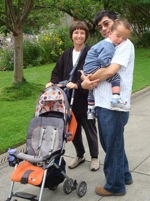 My rarely-performed holiday favorite: Honegger's Cantate de Noël. This is a powerful, even violently emotional work that consistently leaves me in tears. One of my dearest memories is performing it with Hugo Rinaldi's Orchestra Piccola and the Winifred Baker Chorale in the early 1980s.
My rarely-performed holiday favorite: Honegger's Cantate de Noël. This is a powerful, even violently emotional work that consistently leaves me in tears. One of my dearest memories is performing it with Hugo Rinaldi's Orchestra Piccola and the Winifred Baker Chorale in the early 1980s. (I've been reminded that it's time to pull out my Ansermet CD of this work. However, my two year old son Nathan has recently spent countless hours diligently re-organizing my CD collection by jewel box color.)
Irene Jacobson, pianist, accompanist
During one Christmas season years ago, I sang in Rutter's Magnificat in Carnegie Hall under the composer's direction. This is not a Christmas work, per se, but it reminds me of the chilly Manhattan air, and the holiday ornamentation adorning display windows and street corners throughout the city. As a Jew, I have always been fond of Ma'oz Tzur, not so much because of the music, but from the feelings that arise when singing it with family and friends. Finally, Christmas is the time for my husband to put on Vince Guaraldi's A Charlie Brown Christmas CD.
Tattler's Tales
The always-interesting Opera Tattler says when the San Francisco Opera's mid-January announcement rolls around, these are the works to be included in the next season: Aida, Werther, The Marriage of Figaro, Turandot, Rigoletto, and — hallelujah! — The Makropoulos Case. In addition, I am hoping for a good surprise or two from David Gockley.
Albers Trio to Montalvo
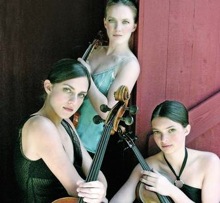
The Albers Trio — violinist Laura, violist Rebecca, and cellist Julie — will be heard in a Montalvo Arts Center concert on Jan. 10, in the Center's Villa Chamber Music Series.
One the program: Mozart's Divertimento in E-flat, K. 563; Martinü's String Trio No. 2; and Beethoven's Trio in D Major, Op. 9, No. 2.The sisters began studying Suzuki violin at age 2 with their mother, Ellie LeRoux. Laura and Rebecca went on to Juilliard; Julie to studied at the Cleveland Institute of Music, and made her debut, at 17, with the Cleveland Orchestra.
Laura is associate concertmaster of the San Francisco Opera. Rebecca teaches at the University of Michigan, Ann Arbor, and she is a member of the Saint Paul Chamber Orchestra and Mark O'Connor's Appalachia Waltz Trio. Julie is in residency with the Chamber Music Society of Lincoln Center. (They must have a difficult commute for rehearsals.)
The Trio will be in residence at UC Davis, Jan. 12-14, and give concerts there on Jan. 16 and 17.
Disappointing Report on Participation in the Arts
The latest NEA national report on "Public Participation in the Arts" doesn't mince words:
... a smaller segment of the adult population either attended arts performances or visited art museums or galleries [in 2008] than in any prior survey. Nor were bad economic conditions in 2007-2008 the only factor at work.Here's a major reason for the downturn:From 1982 to 2008, audiences for performances in classical music, ballet, nonmusical theater, and — most conspicuously, jazz — have aged faster than the general adult population. Even among the most educated, adults are participating less than in previous years.
... since 1982, the share of 18-24-year-olds who report having had any music education in their lives (now 38 percent) has dropped by more than a third. For visual arts training, the proportion (now 21 percent) has nearly halved.A survey of musical preference in the adult population showed "classical/chamber" rising from 28 percent to 33 percent between 1982 and 1992, but then dropping to 27.4 percent and 25.7 percent, respectively in 2002 and 2008. For opera, the figures are 10 percent — 12 percent — 10.2 percent — and a low of 8.3 percent last year.Another finding: that a gulf exists between the participation rates of certain geographic areas — notably the Northeastern and South Central states — suggesting regional disparities in access to arts opportunities of the type captured by the survey.
MTT, Bugs Bunny Share Giant Screen
"First up on the side of the building was the gigantic head of Michael Tilson Thomas, seven stories tall, hair and baton flying on the podium before the New World Symphony," writes Andres Viglucci in the Miami Herald. "Then came an old favorite, Bugs Bunny, conducting a cartoon orchestra ...
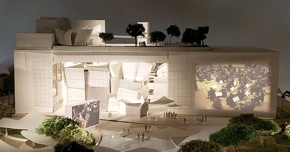
The eye-popping outdoor show that took place Wednesday night in Miami Beach was a sneak peek at what will be free daily fare once the New World inaugurates its new Frank Gehry-designed rehearsal and performance hall in January 2011.From four synchronized projectors, each the size of an old VW Bug engine, the symphony will beam a nightly, ever-changing program of concerts, videos, movies onto the front of its new hall just off Lincoln Road.
The 70-by-100-foot projection wall, conceived as an integral part of the building, will face a planned new 2.5-acre park that symphony and Beach officials hope will become the city's new central gathering spot.
From the projectors, and a companion state-of-the-art sound system, will pour forth live broadcasts from inside the New World hall, or from concert halls around the world, as well as a steady diet of recorded performances, art videos, movies and anything else of a fitting cultural nature to divert the crowds expected to gather in the new park. (No advertisements, city and symphony officials promise.)
Shanghai Honors to Chanticleer
Chanticleer's "Sounds of America" concert in China last year was just named Chorus Concert of the Year, and "From the Path of Beauty" event, in collaboration with the Shanghai Quartet, the Innovation Concert of the Year.
The awards came at Classical Elites Shanghai, held by KLASSIKOM and the magazine Music Lover magazine. Winners were announced in 14 categories, which include classical music, opera production, piano recital, concerto, instrumental, chamber and choral concerts, all staged in the 2008-09 season in Shanghai.
Chanticleer will return to China in June to represent the city of San Francisco at EXPO 2010.
Huge Windfall for Cincinnati Music
Louise Dieterle Nippert, 98, minority owner of the Cincinnati Reds, whose fortune descended from a founder of Procter and Gamble, has established an $85 million fund to support classical music in Cincinnati.
The fund will provide about $3 million annually for the Cincinnati Symphony Orchestra; $500,000 for the Cincinnati Opera; and $200,000 for the Cincinnati Ballet. The rest will go to an array of smaller musical institutions.
The Cincinnati Symphony cut staff recently and has built up about $3.8 million in accumulated deficit. The gift provides some breathing room for a major regional orchestra at a time when music institutions have been severely strapped in their finances.
First the Met, Now Prairie Home Companion
Live HD video feed to theaters is a growing trend, and not only for opera. On Feb. 4, Garrison Keillor's Prairie Home Companion radio show will be seen live in some 500 theaters in the U.S. and Canada.Apparently, Europe is not yet ready for Guy Noir, private eye, one man still trying to find the answers to life's persistent questions. In all of California, the only two participating theaters are in Mariposa and Santa Rosa.
Hallelujah to Messyah
Loving, imaginative, and even humorous variations on Handel's Messiah constitute British composer Paul Ayres' Messyah, about to receive its world premiere from San Francisco's Sanford Dole Ensemble. Ayres has been working on Messyah for years, and the Sanford Dole singers have performed portions of it before. (Excerpts may be heard on the SDE Web site.)
The single performance of the 54-movement complete work, on Dec. 21 at the S.F. Conservatory of Music Concert Hall, will be recorded live, to be made available at a future date.
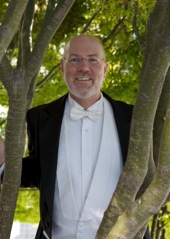
Is there some disrespect shown here to the world's second best-known classical music (assuming that Beethoven's Ninth Symphony is No. 1)? Not as far as Dole is concerned:
I love Messiah but for one who lives in the 21st century, and has a knowledge of all the musical styles that have come since Handel was alive, I think you can't help but hear the music through the prism of time.Dole is especially partial to various jazz styles and rhythms (including gospel) used by Ayres: "Hearing those wonderful baroque melodies recast in 5/8 or 7/8 time makes the music feel very modern."
In the soprano aria "Rejoice greatly, o daughter of Zion" here accompanied by trumpet and bass guitar, Handel's melody is recognizable, but has the twist of the jazzy rhythm. There are numerous inversions, and Dole says upside-down melodies are easy to recognize, but they have a different feel.
My favorite example of this, and a great inside joke for those who have sung the piece, is in the movement "His yoke is easy." We've all made jokes such as "His yoke is greasy." In this case the melody is turned upside down so now "His yoke is over easy."Ayres is coming to San Francisco for the event, and he will give a preconcert lecture at 6:15 p.m., prior to the 7 p.m. concert.Another inside joke come right at the beginning. In the overture, the strings all play different rhythms. The composer explains that it is as if the quartet is having a conversation about playing "inegal," the practice of playing baroque music in "unequal" rhythms.
What we hear in Messyah is that conversation taking place in real time, with each player trying to convince the others how it should go.
I love how Ayres has played with each movement. There are sight gags and unexpected interpolations of other tunes. The whole thing is an utter delight while preserving the dignity of the source material.
Oakland-resident Dole is also artistic director of Bay Choral Guild (formerly Cantabile Chorale), and music director at St. Gregory of Nyssa Episcopal Church. With degrees from the San Francisco Conservatory of Music, Dole has been active in the Bay Area as a conductor, singer, and composer. He was a member of the San Francisco Symphony Chorus for 23 seasons and Philharmonia Baroque Orchestra Chorale for the past 10 seasons. A founding member of Chanticleer, Dole has arranged a good deal of music that has been performed by the renowned chorus.
In Search of Beethoven
Phil Grabsky's In Search of Beethoven will be screening at the Roxie Film Center, San Francisco, for one week beginning on Dec. 18.The film brought together leading performers and experts on Beethoven to reveal new insights. Participants include Gianandrea Noseda, Sir Roger Norrington, Riccardo Chailly, Claudio Abbado, Fabio Luisi, Frans Brüggen, Ronald Brautigam, Hélène Grimaud, Vadim Repin, Janine Jansen, Paul Lewis, Lars Vogt, and Emanuel Ax, among others.
The film is narrated by Juliet Stevenson and young RSC actor David Dawson. Schools and groups may host their own screenings; contact Leigh Gibson for information.

